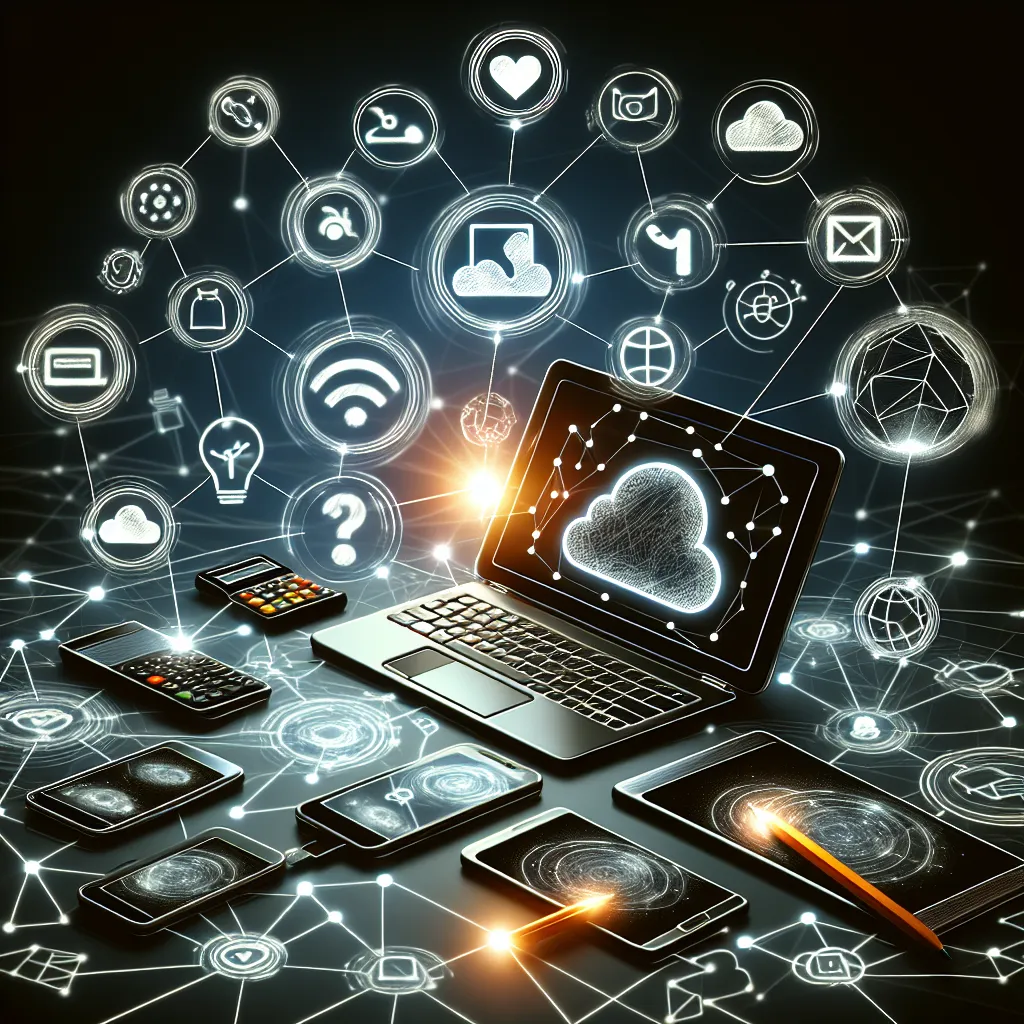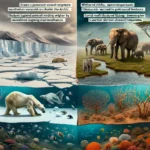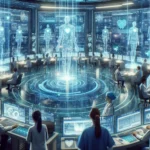In today’s IELTS Reading practice test, we’ll explore “The influence of digital technology on modern communication.” This topic is highly relevant to our interconnected world and frequently appears in IELTS exams. Let’s dive into a comprehensive reading exercise that mimics the actual IELTS test structure, complete with passages of varying difficulty and a range of question types.
 Impact of Digital Technology on Communication
Impact of Digital Technology on Communication
IELTS Reading Test
Passage 1 – Easy Text
The Digital Revolution in Communication
The advent of digital technology has revolutionized the way we communicate. From the early days of email to the current era of instant messaging and video calls, our methods of interaction have undergone a profound transformation. This shift has not only changed how we connect with friends and family but has also reshaped business communications and global relationships.
One of the most significant changes brought about by digital technology is the speed of communication. In the past, sending a letter across continents could take weeks. Now, with the click of a button, we can send messages, photos, and documents instantly to anyone around the world. This immediacy has created a sense of global connectivity that was previously unimaginable.
Moreover, digital platforms have democratized communication. Social media sites like Facebook, Twitter, and Instagram have given individuals a voice on a global stage. Anyone with internet access can now share their thoughts, experiences, and creativity with a potentially vast audience. This has led to the rise of influencers and citizen journalism, changing the landscape of media and information dissemination.
However, this digital revolution is not without its challenges. The oversaturation of information can lead to communication fatigue and decreased attention spans. Additionally, the ease of spreading information has also facilitated the proliferation of misinformation, requiring users to be more critical and discerning in their consumption of online content.
Despite these challenges, the benefits of digital communication are undeniable. It has enabled remote work, fostered international collaborations, and kept people connected during global crises. As we continue to navigate this digital age, it’s clear that the influence of technology on our communication methods will only grow stronger, shaping how we interact, work, and understand the world around us.
Questions 1-5
Do the following statements agree with the information given in the reading passage?
Write:
TRUE if the statement agrees with the information
FALSE if the statement contradicts the information
NOT GIVEN if there is no information on this in the passage
- Digital technology has slowed down the pace of communication.
- Social media platforms have given more people the ability to share their opinions globally.
- The spread of misinformation is a challenge in the digital age.
- Digital communication has made international business collaborations more difficult.
- The impact of digital technology on communication is expected to decrease in the future.
Questions 6-10
Complete the sentences below.
Choose NO MORE THAN THREE WORDS from the passage for each answer.
- In the past, sending a letter across continents could take ___.
- Social media has led to the rise of ___ and citizen journalism.
- The oversaturation of information can lead to communication ___ and decreased attention spans.
- Digital communication has enabled ___, fostered international collaborations, and kept people connected during global crises.
- Users need to be more ___ and discerning in their consumption of online content.
Passage 2 – Medium Text
The Transformation of Workplace Communication
The proliferation of digital technology has fundamentally altered the landscape of workplace communication, ushering in an era of unprecedented connectivity and collaboration. This transformation has not only changed the tools we use to communicate but has also reshaped organizational structures, work processes, and corporate cultures.
One of the most significant changes has been the shift towards remote work. Digital platforms such as Zoom, Slack, and Microsoft Teams have made it possible for employees to collaborate effectively regardless of their physical location. This has led to the rise of distributed teams and even fully remote companies, challenging traditional notions of the workplace and expanding the talent pool for organizations beyond geographical constraints.
The asynchronous nature of digital communication has also introduced new dynamics to workplace interactions. Emails, instant messaging, and project management tools allow for continuous communication across different time zones, enabling 24/7 productivity in global organizations. However, this constant connectivity has also blurred the lines between work and personal life, raising concerns about employee well-being and work-life balance.
Digital technology has also democratized information flow within organizations. Intranets, wikis, and collaborative documents have made it easier for employees at all levels to access and contribute to company knowledge. This horizontal flow of information has flattened hierarchies in many organizations, fostering a more open and innovative corporate culture.
However, the reliance on digital communication has also presented challenges. The lack of non-verbal cues in text-based communication can lead to misunderstandings and misinterpretations. Moreover, the information overload resulting from multiple communication channels can decrease productivity and increase stress levels among employees.
To address these challenges, many organizations are adopting digital communication strategies that balance the benefits of technology with the need for human connection. This includes implementing communication guidelines, encouraging video calls for complex discussions, and organizing regular in-person meetups for remote teams.
As we look to the future, emerging technologies such as virtual reality (VR) and augmented reality (AR) promise to further revolutionize workplace communication. These technologies have the potential to create more immersive and engaging remote collaboration experiences, bridging the gap between physical and virtual workspaces.
In conclusion, while digital technology has brought about significant improvements in workplace communication, organizations must navigate its challenges thoughtfully. By leveraging the strengths of digital tools while maintaining a focus on human connection, companies can create more efficient, flexible, and inclusive work environments.
Questions 11-14
Choose the correct letter, A, B, C, or D.
-
According to the passage, digital technology has:
A) Only changed the tools we use to communicate
B) Reshaped organizational structures and work processes
C) Made workplace communication less efficient
D) Decreased the need for human interaction in the workplace -
The shift towards remote work has:
A) Reduced collaboration in the workplace
B) Limited the talent pool for organizations
C) Expanded opportunities for hiring beyond geographical constraints
D) Increased the cost of running a business -
Asynchronous communication in the workplace has:
A) Reduced productivity in global organizations
B) Improved work-life balance for all employees
C) Enabled 24/7 productivity across different time zones
D) Eliminated the need for real-time communication -
The democratization of information flow in organizations has:
A) Increased hierarchical structures
B) Reduced innovation in corporate cultures
C) Made it harder for employees to access company knowledge
D) Fostered a more open corporate culture
Questions 15-20
Complete the summary below.
Choose NO MORE THAN TWO WORDS from the passage for each answer.
Digital technology has transformed workplace communication, enabling (15) and changing organizational structures. While it has facilitated continuous communication and (16) information flow, it has also presented challenges such as the (17) in text-based communication and information overload. To address these issues, companies are implementing (18) and encouraging video calls for complex discussions. Future technologies like (19) and augmented reality may create more immersive collaboration experiences. Ultimately, organizations need to balance the benefits of digital tools with the need for (20) to create efficient and inclusive work environments.
Passage 3 – Hard Text
The Cognitive and Social Implications of Digital Communication
The ubiquity of digital communication technologies has precipitated a paradigm shift in human interaction, engendering profound cognitive and social ramifications that are reshaping the fabric of society. This technological revolution, while facilitating unprecedented connectivity and information access, has concurrently altered cognitive processes, social dynamics, and the very nature of human relationships.
From a cognitive perspective, the incessant stream of digital information has engendered significant changes in attention spans and information processing capabilities. The phenomenon of “continuous partial attention,” coined by Linda Stone, describes the modern tendency to constantly monitor multiple information streams, resulting in a persistent state of divided attention. This cognitive adaptation, while potentially enhancing multitasking abilities, may come at the cost of deep, focused thinking and the capacity for sustained concentration.
Moreover, the externalization of memory through digital devices has transformed mnemonic processes. The ready availability of information has diminished the necessity for rote memorization, potentially atrophying certain cognitive functions while simultaneously freeing cognitive resources for higher-order thinking and creativity. This shift raises profound questions about the nature of knowledge and expertise in the digital age.
In the social domain, digital communication has reconfigured interpersonal dynamics and community structures. The concept of “networked individualism,” proposed by sociologist Barry Wellman, elucidates how digital technologies have facilitated a shift from place-based communities to person-centered networks. This transformation has engendered more diverse and expansive social connections but may also contribute to the erosion of traditional community ties and social cohesion.
The asynchronous and often text-based nature of digital communication has also altered the qualitative aspects of social interaction. While enabling more frequent contact, these mediums may lack the richness of face-to-face communication, potentially impacting empathy, emotional intelligence, and the depth of personal relationships. The phenomenon of “context collapse” in social media platforms, where diverse audiences are flattened into a single context, further complicates social dynamics and self-presentation.
Furthermore, the algorithmically-mediated nature of many digital platforms has introduced new dynamics in information dissemination and opinion formation. Echo chambers and filter bubbles can reinforce existing beliefs and polarize perspectives, potentially undermining social discourse and democratic processes. The viral spread of misinformation and the manipulation of digital social networks pose significant challenges to social cohesion and informed decision-making.
However, it would be reductive to view these changes solely through a negative lens. Digital communication technologies have also facilitated unprecedented opportunities for collaboration, knowledge sharing, and social mobilization. Online communities have provided support and resources for marginalized groups, and social media platforms have played crucial roles in social movements and political activism.
As we navigate this digital landscape, it is imperative to develop new literacies and social norms adapted to these technologies. Digital literacy education, critical thinking skills, and mindful technology use are essential in harnessing the benefits of digital communication while mitigating its potential negative impacts. Moreover, interdisciplinary research integrating neuroscience, psychology, sociology, and media studies is crucial in understanding and addressing the complex implications of our increasingly digitalized communication ecosystem.
In conclusion, the influence of digital technology on modern communication extends far beyond mere convenience, fundamentally altering cognitive processes, social structures, and the nature of human interaction. As we continue to evolve alongside these technologies, a nuanced understanding of their impacts and thoughtful navigation of their use will be crucial in shaping a future where digital communication enhances rather than diminishes human potential and social well-being.
Questions 21-26
Complete the sentences below.
Choose NO MORE THAN TWO WORDS from the passage for each answer.
-
The constant monitoring of multiple information streams is referred to as “continuous partial ___“.
-
The ready availability of information has reduced the need for ___, potentially weakening certain cognitive functions.
-
Barry Wellman’s concept of “ ” describes how digital technologies have shifted communities from place-based to person-centered networks.
-
The ___ nature of digital communication may lack the richness of face-to-face interaction.
-
in social media platforms complicates social dynamics by flattening diverse audiences into a single context.
-
Echo chambers and filter bubbles can ___ existing beliefs and polarize perspectives.
Questions 27-30
Choose FOUR letters, A-H.
Which FOUR of the following statements are true according to the passage?
A) Digital communication has only negative effects on cognitive processes.
B) The externalization of memory through digital devices may free up cognitive resources for creativity.
C) Networked individualism has led to more diverse social connections.
D) Asynchronous communication always improves the quality of social interactions.
E) Algorithmic mediation of digital platforms can reinforce existing beliefs.
F) Digital communication technologies have hindered collaboration and knowledge sharing.
G) Online communities have provided support for marginalized groups.
H) The impacts of digital communication on society are fully understood and easily addressed.
Questions 31-35
Do the following statements agree with the claims of the writer in the reading passage?
Write:
YES if the statement agrees with the claims of the writer
NO if the statement contradicts the claims of the writer
NOT GIVEN if it is impossible to say what the writer thinks about this
- The ubiquity of digital communication technologies has caused a significant shift in human interaction.
- The phenomenon of “continuous partial attention” enhances deep, focused thinking.
- Digital literacy education is essential for navigating the challenges posed by digital communication technologies.
- The asynchronous nature of digital communication always leads to stronger personal relationships.
- Interdisciplinary research is necessary to fully understand the implications of digital communication.
Answer Key
Passage 1 – Easy Text
- FALSE
- TRUE
- TRUE
- NOT GIVEN
- FALSE
- weeks
- influencers
- fatigue
- remote work
- critical
Passage 2 – Medium Text
- B
- C
- C
- D
- remote work
- horizontal
- lack of non-verbal cues
- communication guidelines
- virtual reality
- human connection
Passage 3 – Hard Text
- attention
- rote memorization
- networked individualism
- asynchronous
- Context collapse
- reinforce
- B, C, E, G
- YES
- NO
- YES
- NO
- YES
- YES
Conclusion
This IELTS Reading practice test on “The influence of digital technology on modern communication” offers a comprehensive exploration of how digital tools have transformed our personal and professional interactions. From the democratization of information to the cognitive implications of constant connectivity, these passages highlight the multifaceted impact of technology on our communication landscape.
As you prepare for your IELTS exam, remember that topics related to technology and communication are increasingly common. They often require you to analyze complex ideas and their societal implications. To excel in the IELTS Reading section:
- Practice skimming and scanning techniques to quickly locate key information.
- Familiarize yourself with academic vocabulary related to technology and social sciences.
- Develop your ability to identify main ideas and supporting details in complex texts.
- Work on your time management skills to ensure you can complete all questions within the allotted time.
For more practice on related topics, check out our articles on how digital media is influencing political movements and how technology is changing the way we work. These resources will help you broaden your understanding of the digital landscape and improve your IELTS Reading skills.
Remember, success in the IELTS Reading test comes with consistent practice and a strategic approach. Keep refining your skills, and you’ll be well-prepared to tackle any topic that comes your way on test day.


